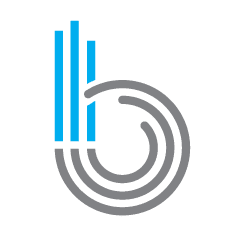In today’s technological world, people are inundated with content — digital, social, news, books, magazines — the list goes on. In fact, we create 140 million tweets, 1.5 billion pieces of content, and 2 million videos each day. This is why visual information such as infographics are becoming increasingly popular.
Infographics can be an incredibly powerful marketing tool for your business. According to HubSpot, “businesses that publish infographics grow their traffic an average of 12% more than those that don’t.”
Infographics provide significant value from a content-supporting standpoint. Companies are constantly generating content, but the bulk of it is often heavy and wordy. At Criterion.B., we create content daily for our clients and focus on utilizing the visual aspect of infographics to break up the content.
But the critical balance when designing an infographic is to create the right visual information and present it in the right way to capture your audience’s attention.
Below, we explore the role of infographics in branded content marketing and 5 benefits of creating visuals for your content:
1. Storytelling
Infographics can help capture the essence of your content in a very appealing way by telling your readers a story. With imagery and words, infographics allow readers to more easily dissect a complex subject and help sustain the reader’s interest. Infographics that simply depict a list of unrelated statistics will lose audience attention. Rather, the infographic should balance compelling text with relevant data to create an efficient and appealing visual.

2. Readability
“An infographic can translate heavy blog text into something that is digestible, scannable, and easier to understand,” said Criterion.B. Creative Director Greg Ratzlaff. “We are such a visually focused culture, and if we cannot scan through something quickly, or have visuals to help complete the thought, the text may not make as strong of an impact. The visual impact that design provides is important in the full understanding of the content itself.”
People only see 20% of the text on a page on average during a website visit; infographics allow readers to skim the content quickly to decide if they want to find out more. Additionally, 90% of the information transmitted to your brain is visual. This is why many people would rather look at an infographic than read the text version.
3. Shareability Across Social
Infographics should not only be easy to consume, but easy to share. “These visual assets are a great resource for ourselves and our clients to download and share across all social platforms,” Ratzlaff said.
Blogs may not be a proper fit for sharing on certain social media sites, but infographics can be shared across all platforms to help drive engagement. Pinterest, for example, is geared toward image curation. Pinterest users interested in your business often miss out because you are feeding them the wrong kind of content.

4. Brand Awareness
Enhanced brand awareness is another benefit of infographics. “Visual content is used as an asset to further promote your brand and make you an authority or subject-matter expert,” Ratzlaff said.
The most important aspect of an infographic is that it should represent and reflect your brand well. Visual content should serve as another consistent piece of marketing for your brand, and therefore consider design aspects like font, colors, iconography, callouts, etc.
5. SEO and Website Traffic
Infographics are also a great way to drive more traffic to your site to increase conversions and ROI. Think about the last several infographics you saw, and where you saw them. Infographics are prevalent in emails, blogs, advertisements, Facebook, Twitter, and Instagram. One of the biggest reasons companies have found infographics so useful from a marketing perspective is because of this versatility; they can make your brand much more visible.
Additionally, by adding alt text, a title, and a description of the infographic using targeted keywords, you can boost your website’s ranking on Google. Other ways to boost SEO go back to ensuring your infographic is shareable, which would encourage blogs, websites, and even influencers to share your asset and increase your chances of backlinks.

6. Less Is More
Sometimes companies try to communicate too much in an infographic, slowing down the reader and negating the benefits of having the graphic in the first place.
“Some infographics are over 10,000 pixels long and offer multiple sections and content to consume,” Ratzlaff said. “Think through the content and story you want to communicate and then create it in a digestible framework.”


